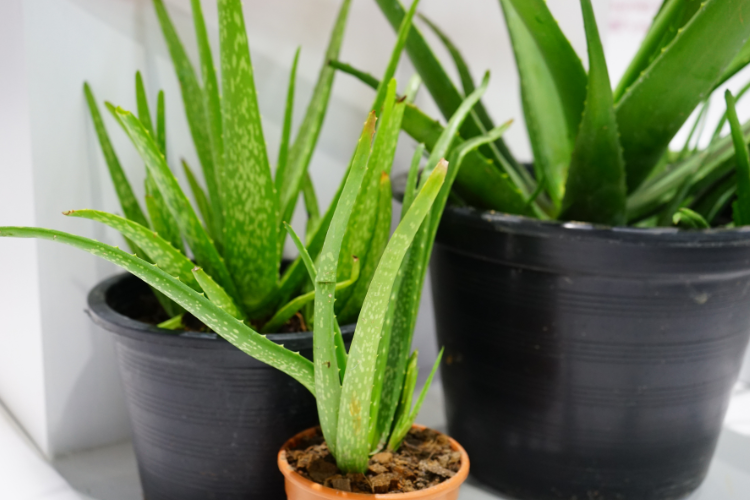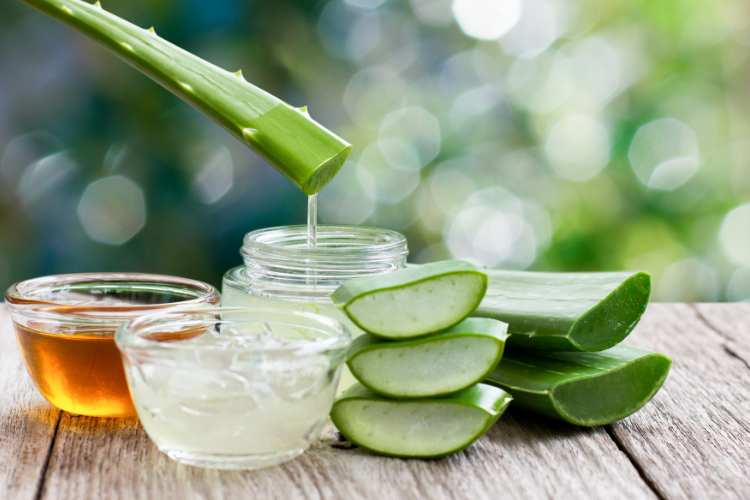Blog
Aloe Vera, The Wonder Plant
Aloe vera, often referred to as the “miracle plant” or “wonder plant,” has been celebrated for thousands of years for its incredible healing and medicinal properties. Originating from the Arabian Peninsula, Aloe vera is now cultivated worldwide, thriving in tropical and subtropical regions. The succulent leaves of this plant are rich in a gel-like substance that has been used for various health and skincare purposes since ancient times.
In this comprehensive article, we’ll explore everything there is to know about Aloe vera—its history, benefits, uses, cultivation, and the science behind its remarkable properties. By the end of this blog, you’ll have a deep understanding of why Aloe vera remains one of the most valued plants in natural medicine and modern skincare.
1. The History of Aloe Vera
Ancient Origins
Aloe vera’s use can be traced back over 6,000 years to ancient Egypt, where it was known as the “plant of immortality.” Egyptian queens like Cleopatra and Nefertiti reportedly used Aloe vera as part of their beauty regimens. It was also used in embalming practices, highlighting its significance in Egyptian culture.
Aloe vera’s reputation spread across ancient civilizations, with records showing its use in ancient China, India, Greece, and Rome. The Greek physician Dioscorides, in the 1st century AD, documented its healing properties, and it was considered a vital plant in traditional Chinese medicine and Ayurveda.

Medieval to Modern Times
Throughout the Middle Ages, Aloe vera continued to be a staple in herbal medicine across Europe. By the 17th century, Aloe vera was brought to the Americas by Spanish explorers, where it quickly became a popular remedy for burns, wounds, and digestive issues.
Today, Aloe vera is recognized worldwide, not only as a medicinal plant but also as a key ingredient in cosmetics, pharmaceuticals, and the food industry.
2. The Botanical Profile of Aloe Vera
Classification and Characteristics
Aloe vera belongs to the Asphodelaceae family, which includes around 500 species of flowering succulents. Aloe barbadensis miller is the most commonly used species for medicinal purposes.
The plant is characterized by its thick, fleshy leaves that are green or gray-green. The leaves contain a gel that is clear and viscous, which is where the plant stores most of its active compounds. Aloe vera plants can grow up to 24-39 inches tall, and when mature, they produce yellow tubular flowers.
Cultivation and Growth
Aloe vera is a hardy plant that can thrive in a variety of conditions, making it easy to cultivate. It prefers sandy, well-drained soils and requires minimal watering, making it drought-tolerant. Aloe vera grows best in warm climates, but it can also be grown indoors in colder regions.
Propagation of Aloe vera is typically done through offsets, which are small plants that grow at the base of the parent plant. These offsets can be transplanted to grow new plants.

3. The Nutritional Composition of Aloe Vera
Vitamins and Minerals
Aloe vera is a powerhouse of nutrients, containing over 75 active compounds. These include vitamins such as A, C, E, and B12, as well as minerals like calcium, magnesium, zinc, and potassium. The plant is particularly rich in antioxidants, which help protect the body from oxidative stress and support overall health.
Enzymes and Amino Acids
Aloe vera contains eight enzymes that help reduce inflammation and promote digestion. These enzymes include amylase and lipase, which aid in the breakdown of sugars and fats. Additionally, Aloe vera provides 19 of the 20 essential amino acids required by the human body, including 7 of the 8 essential amino acids.
Polysaccharides and Anthraquinones
One of the most important components of Aloe vera is its polysaccharides, which have immune-boosting and skin-healing properties. The most notable polysaccharide in Aloe vera is acemannan, which is known for its ability to promote wound healing and support the immune system.
Anthraquinones, another group of compounds found in Aloe vera, have strong laxative effects and are used in the treatment of constipation. Aloin, a type of anthraquinone, is one of the most potent compounds in Aloe vera and is also responsible for its bitter taste.
4. Health Benefits of Aloe Vera
Skin Health
Aloe vera is perhaps most famous for its skin-healing properties. It is widely used to treat burns, cuts, and other skin conditions. The gel forms a protective layer over wounds, which helps retain moisture, reduce infection, and accelerate healing. Aloe vera also has anti-inflammatory properties, making it effective in treating skin irritations such as eczema, psoriasis, and acne.
The moisturizing properties of Aloe vera make it a popular ingredient in skincare products. It helps hydrate the skin without leaving it greasy, making it suitable for all skin types.

Digestive Health
Aloe vera juice is commonly used to support digestive health. It can help soothe and heal the lining of the digestive tract, making it beneficial for conditions such as acid reflux, irritable bowel syndrome (IBS), and ulcerative colitis. Aloe vera’s natural laxative properties are also useful in relieving constipation.
Immune System Support
The immune-boosting properties of Aloe vera are largely attributed to its polysaccharides, which help stimulate the production of white blood cells. This enhances the body’s ability to fight off infections and illnesses. Aloe vera also has antioxidant properties that help protect the body from free radicals, which can weaken the immune system.
Oral Health
Aloe vera is also beneficial for oral health. Its antibacterial and anti-inflammatory properties make it effective in treating gum diseases like gingivitis. Aloe vera can help reduce plaque buildup, soothe bleeding gums, and promote overall oral hygiene. Many natural toothpaste brands incorporate Aloe vera as a key ingredient for these reasons.
Blood Sugar Regulation
Some studies suggest that Aloe vera may help regulate blood sugar levels in people with type 2 diabetes. The plant’s compounds can improve insulin sensitivity and help manage blood glucose levels. However, more research is needed to fully understand the mechanisms behind these effects.
5. Uses of Aloe Vera
Skincare
Aloe vera is a staple ingredient in many skincare products, including moisturizers, sunscreens, and anti-aging creams. Its ability to hydrate the skin, reduce inflammation, and promote healing makes it ideal for treating various skin conditions.
To use Aloe vera gel directly from the plant, simply cut a leaf, scoop out the gel, and apply it to the skin. It can be used as a face mask, a spot treatment for acne, or a soothing balm for sunburns and rashes.
Haircare
Aloe vera is also beneficial for hair health. It helps reduce dandruff, moisturize the scalp, and promote hair growth. Aloe vera can be used as a natural conditioner, leaving hair soft and shiny without the use of harsh chemicals.
For a DIY hair treatment, mix Aloe vera gel with coconut oil or your favorite conditioner and apply it to your hair. Leave it on for 30 minutes before rinsing for soft, manageable hair.
Digestive Aid
Drinking Aloe vera juice is a popular way to support digestive health. It helps soothe the digestive tract, reduce inflammation, and improve bowel regularity. Aloe vera juice can be consumed on its own or mixed with other juices for a refreshing drink.
It’s important to note that Aloe vera juice should be consumed in moderation, as excessive consumption can lead to side effects such as diarrhea.
Oral Care
Aloe vera can be used as a natural mouthwash to improve oral health. Its antibacterial properties help reduce plaque and fight gum disease. To make a simple Aloe vera mouthwash, mix Aloe vera gel with water and a few drops of peppermint oil.
6. The Science Behind Aloe Vera
Skin Healing
Research has shown that Aloe vera accelerates wound healing by increasing collagen production and improving blood circulation in the affected area. Its anti-inflammatory properties help reduce swelling and redness, while its moisturizing effects prevent the skin from drying out.
Anti-Inflammatory Effects
Aloe vera contains compounds like bradykinase, which help reduce inflammation when applied to the skin. These anti-inflammatory effects are beneficial in treating conditions like psoriasis and eczema, where inflammation is a primary symptom
Antimicrobial Properties
Aloe vera has been shown to have antimicrobial properties, making it effective against bacteria, fungi, and viruses. This makes it a valuable ingredient in treating infections, both on the skin and internally.
Cancer Research
Some studies have suggested that Aloe vera may have potential in cancer treatment, particularly due to its immune-boosting and anti-inflammatory properties. However, more research is needed to confirm these findings and determine how Aloe vera can be used effectively in cancer therapy.
7. Growing Aloe Vera at Home
Choosing the Right Pot: Aloe vera plants thrive in pots with good drainage, as they are prone to root rot if left in standing water. Choose a pot with drainage holes and use a well-draining soil mix, such as a cactus or succulent mix.
Watering: Aloe vera is a drought-tolerant plant, so it doesn’t need frequent watering. Water the plant deeply but infrequently, allowing the soil to dry out completely between waterings. Overwatering can lead to root rot, so it’s better to underwater than overwater.
Light Requirements: Aloe vera prefers bright, indirect sunlight. It can tolerate some direct sunlight, but too much can cause the leaves to turn brown or yellow. If growing indoors, place the plant near a sunny window.

Temperature and Humidity: Aloe vera thrives in warm, dry conditions. It can be grown outdoors in USDA hardiness zones 9-11 or indoors in cooler climates. The ideal temperature range for Aloe vera is between 55°F and 80°F (13°C and 27°C). It does not tolerate frost, so if you live in a colder climate, bring your Aloe vera plant indoors during the winter.
Fertilization: Aloe vera doesn’t require much fertilizer. Feed the plant with a diluted, balanced fertilizer once a month during the growing season (spring and summer). Avoid fertilizing during the winter, as the plant’s growth slows down.
Propagation: Aloe vera can be easily propagated through offsets, also known as “pups,” that grow at the base of the parent plant. To propagate, carefully remove the offset and let it dry for a few days. Once the cut surface has healed, plant it in a pot with well-draining soil.
8. Aloe Vera in Modern Products
Skincare Products
Aloe vera is a key ingredient in many skincare products, including moisturizers, sunscreens, and anti-aging creams. Its ability to soothe, hydrate, and heal the skin makes it a popular choice for both over-the-counter and luxury skincare brands.
Haircare Products
Aloe vera is also found in a variety of haircare products, such as shampoos, conditioners, and hair masks. It helps moisturize the scalp, reduce dandruff, and promote healthy hair growth.
Dietary Supplements
Aloe vera is available in dietary supplements, which are often marketed for their digestive health benefits. These supplements come in various forms, including capsules, powders, and juices.
Oral Care Products
Aloe vera is used in natural toothpaste and mouthwash products due to its antibacterial and anti-inflammatory properties. These products are designed to improve oral health by reducing plaque and soothing gum inflammation.
9. DIY Aloe Vera Recipes
Aloe Vera Face Mask
- 2 tablespoons of Aloe vera gel
- 1 tablespoon of honey
- 1 teaspoon of lemon juice
Mix the ingredients together and apply the mask to your face. Leave it on for 10-15 minutes, then rinse with warm water. This mask helps hydrate the skin and reduce inflammation.
Aloe Vera Hair Mask
- 3 tablespoons of Aloe vera gel
- 2 tablespoons of coconut oil
Combine the Aloe vera gel and coconut oil. Apply the mixture to your hair, focusing on the scalp and ends. Leave it on for 30 minutes, then rinse with warm water. This mask helps moisturize the hair and promote healthy growth.
Aloe Vera Juice
- 1/2 cup of Aloe vera gel
- 1 cup of orange juice or any fruit juice of your choice
Blend the Aloe vera gel with the juice until smooth. Drink this refreshing beverage to support digestive health and boost your immune system.

10. Safety and Side Effects of Aloe Vera
Topical Use: Aloe vera is generally safe for topical use, but some people may experience allergic reactions, such as skin irritation or itching. If you have sensitive skin, do a patch test before applying Aloe vera gel to a larger area.
Oral Consumption: While Aloe vera juice is beneficial for digestive health, it should be consumed in moderation. High doses of Aloe vera can cause diarrhea, cramping, and dehydration. Pregnant women and individuals with certain health conditions should consult a healthcare provider before consuming Aloe vera supplements.
Drug Interactions: Aloe vera can interact with certain medications, such as blood thinners and diabetes medications. If you are taking any prescription drugs, consult your doctor before using Aloe vera supplements.
Takeaway
Aloe vera is a remarkable plant with a rich history and a wide range of benefits. From ancient civilizations to modern skincare, its healing properties have been recognized and utilized across the world. Whether you’re looking to improve your skin health, support your digestive system, or simply add a natural ingredient to your beauty routine, Aloe vera is a versatile and powerful ally.
As research continues to unveil more of Aloe vera’s potential, it remains a symbol of natural health and wellness. By incorporating Aloe vera into your daily life, you can experience the many benefits of this extraordinary plant for yourself.

 Indonesia
Indonesia

